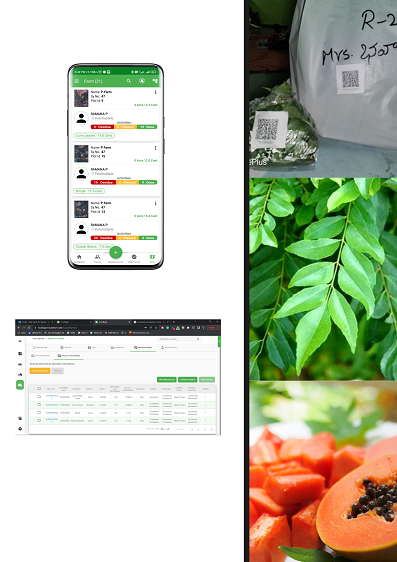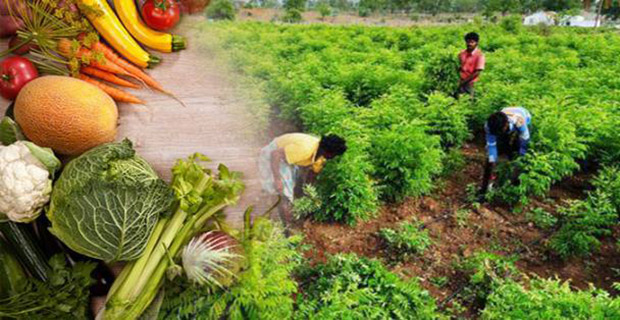Do you know that growth in agriculture remains 2 to 3 times more effective than growth in any other sector to reduce poverty?
The world’s 500 million smallholder farmers are responsible for this growth!
70% of world food is grown by these farmers.
Agriculture, the backbone of a country’s economy contributes to the developing markets and is a powerful tool to boost economic growth and reduce poverty. Agriculture also contributes to the country’s economy by providing livelihood and employment to millions. It is also an important source of raw materials and other industrial products. Agribusiness is important to vitalize the agriculture sector and make it profitable.

Who are the agribusiness incubators?
Agribusiness incubators play an important role in developing technology and the value chains required for growth in agriculture. They could be considered major contributors to the economic growth of a country. Governments have initiated technology business incubation units to support this agro-industry and change the landscape of the rural economy.
These incubators promote growth through technology and innovation and economic development strategies. Market linkages and networks are crucial for an agribusiness to be sustainable. These incubators can provide the access to high-value customers. They can help to build sustainable ventures which would increase crop yields, reduce post-harvest losses and create an organized structure.
Grameena Incubation Centre (GIC) is a center of excellence under TIDE 2.0 scheme of the Ministry of Electronics and Information technology (MeitY), New Delhi. GIC is completely rural-based and focuses on agriculture and technology and is backed by Bhagavatula Charitable trust (BCT). It aims to solve the local problems in rural and tribal Vishakhapatnam by promoting entrepreneurship. GIC conceptualized by BCT was one of the 34 incubation centers across India
What is the importance of Agritech companies in agribusiness?
Agritech companies are an integral part of agriculture value chains and sustainable food systems. They usher in a number of benefits of economic growth, reduction in poverty, and visibility in the market with their technological solutions. These companies with the support of incubators establish a digital platform and provide solutions on farming practices, generating value-added products and providing a connection with other actors in the ecosystem. The platform can be considered a technology exchange between the supply and demand side. The FPOs and Krishi Vigyan kendras look for market ready solutions while incubators are interested in technologies.
GIC finds a way forward with TraceX technologies
GIC has a number of farms with a number of smallholder farmers working on vegetable produce. Their main objective is to help these farmers in achieving maximum agricultural yields and nurture their growth with providing market reach. The need for a collaborative, digitized platform that provides the best farming practices to enable effective and sustainable food production is the solution
GIC ties up with TraceX technologies to provide the digital solution for transparent and traceable food supply chains on a pilot basis. The end-to-end traceability of the agri produce, along with streamlined processes on a common digital platform provides the necessary solution to the otherwise challenges of the food supply chain.
Read how Blockchain technology can revolutionize the food supply chains

GIC has about 20 plots registered where the farmers grow multiple crops ranging from papaya, ladies’ finger, brinjal, curry leaves, and radish. They are grown seasonally, harvested, and transported to the markets in Vishakhapatnam.
Traceability solutions leveraging the blockchain technology
TraceX’s cloud-based SaaS platform provides end-to-end traceability of the produce from the farms to the market on a collaborative platform. GIC works on a made-to-order model for processing the farm produce. Based on orders received from customer WhatsApp groups through mobile, the produce is harvested every Thursday, sent for sorting and grading, and sealed in bags. The QR code stamped bags are transported to the local markets
The journey of these vegetables
- The farmer gets onboarded to the platform with a mobile application with all his details.
- The land details are mapped in the geospatial environment.
- The various crop details are entered in the system to ensure crop planning activities
- The Package of Practices is defined for all the crops to ensure effective yields.
- The decision dashboards help in harvest management and tracking of harvest produce.
- Crop activity can be monitored to take informed decisions.
- Configuration of processes like sorting and grading of vegetables.
- Inventory management and generation of GRN
- Batch management and Serialization is carried out for easy tracking
- Easy generation of Sales orders.
- The netted sealed bags are tagged with generated QR codes to ensure end to end traceability.

The Happy customers of GIC
Scanning the QR code displays the entire journey of these vegetables and fruits right from the farms to the end consumer. A credible product that wins the consumer trust and gives satisfaction to the farmers to gain visibility in the market.
Read how Sustainable Agriculture can build Future brands.
A satisfaction for TraceX to ensure trust and transparency in the journey of vegetables and fruits for the hundreds of consumers thereby heralding an era of food safety and creating a blueprint for a safe and sustainable future
BCT which conceptualized GIC feels, “Our Country’s property lies in the well-being of our villages.”


The way forward with Supply Chain Digitization with Blockchain Traceability!
A peep into few of the agriculture chains, the challenges that loom over the stages in the Supply Chain, how the Traceability and Sustainable Management of these Supply chains can positively affect the agriculture sector and more..
Download your copy
